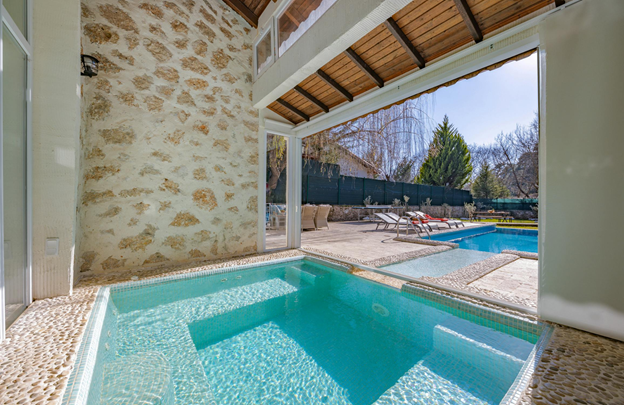The Wall Foam for Your Pool
Building a pool takes more than digging up your property and filling it with water. You need other materials to make it the ultimate backyard oasis of your dreams, and that means completing your pool’s appearance with a pool wall foam.
When setting up or upgrading a pool, selecting the right wall foam is vital for maintaining durability, comfort, and efficiency. Wall foams act as a protective barrier between the liner and the pool’s structural walls.
It prevents direct contact with metal or hard surfaces that can lead to premature wear and tear. It also provides insulation, helping to regulate water temperature, making sure that your water is just right for your personal oasis.
But do you know which types of pool wall foam suits your pool? Here’s what you need to know when choosing the right one for you.
The Importance of Pool Wall Foam
Pool wall foam serves several key functions, and mainly these focus on protection and insulation. First, it protects the pool liner. It prevents punctures and abrasions from direct contact with steel or aluminum pool walls.
Second, it creates a cushioned surface, reducing the hardness of the pool walls. So it provides additional comfort and protection to those who use the pool, as it also covers sharp edges and conceals the rough bits of the pool surface.
Finally, it insulates the pool from the surrounding environment. It helps to regulate water temperature by reducing heat transfer from external elements. .
Types of Pool Wall Foam
There are different types of wall foam available, and choosing the right one depends on your pool’s needs and installation requirements.
The Standard Wall Foam
Typically 1/8-inch to 1/4-inch thick, and is ideal for above-ground and semi-inground pools. It provides a basic cushion layer and liner protection, and is cost-effective and easy to install. The standard pool wall foam works best when combined with heavy-duty adhesive spray.
High-Density Wall Foam
Thicker and more durable than standard foam, the high density foam is usually around 3/8-inch thick. It offers enhanced protection and insulation, and is recommended for pools in regions with extreme temperature variations. It also reduces liner movement and potential creases.
XPS (Extruded Polystyrene) Foam
Made from extruded polystyrene, often seen in residential sheathing. It offers superior insulation and moisture resistance. This is available in different thicknesses (1/2-inch, 3/4-inch, or even 2 inches), and is ideal for providing extra stability in semi-inground or inground pool setups.
XPS also reduces temperature fluctuations by preventing heat loss through the walls.
Foam Sheet
Commonly found in home improvement stores and is available in various PSI ratings, with 15 PSI being common for pools. If you prefer this, make sure to avoid foams with loosely bonded beads (like regular Styrofoam) as they can crumble and deteriorate over time. However, they do work well for insulating and providing a smooth surface for pool liners.
Choosing the Right One
Given the many choices, you need to factor the following points on choosing the right one for your property, other than your budget. First, consider the thickness and density of the foam. Thicker foams (3/8-inch or higher) provide better insulation and durability.
High-density foam offers more impact resistance and longer lifespan, while lighter foam options (1/8-inch) work well for budget-conscious buyers needing basic liner protection.
Second, you might want to check the suitability of the foam with your pool type. Above-ground pools generally use standard wall foam. Semi-inground and inground pools benefit from high-density or XPS foam. Pools in hot climates should consider insulating foam to prevent heat absorption.
Third, moisture resistance and durability should matter when you live in an area where the weather can be extreme. Choose foams that do not absorb water to prevent mold and mildew buildup.
Extruded polystyrene (XPS) foam resists water damage better than expanded polystyrene (EPS). It’s best not to use any foam with loose beads, as these may deteriorate over time.
Finally, look for foams that are easy to install. Make sure they can be applied smoothly without wrinkles. You can use heavy-duty spray adhesive to secure foam properly to the walls, and ensure the foam aligns with liner receiver tracks for a seamless fit.
Best Buy Pool Supply Has You Covered
Choosing the right pool wall foam can enhance the longevity of your pool liner, improve comfort, and even assist in temperature regulation. No matter what kind of pool wall foam you need, we have it so your personal oasis is well-insulated and protected.
Best Buy Pool Supply has pool products and accessories you need to complete your swimming pool construction or upgrading. We have everything you need to complete your pool needs, and that includes maintenance and equipment.
Visit Best Buy Pool Supply now to find the pool wall foam you need to extend the life of your pool and create a more enjoyable swimming environment for years to come!

